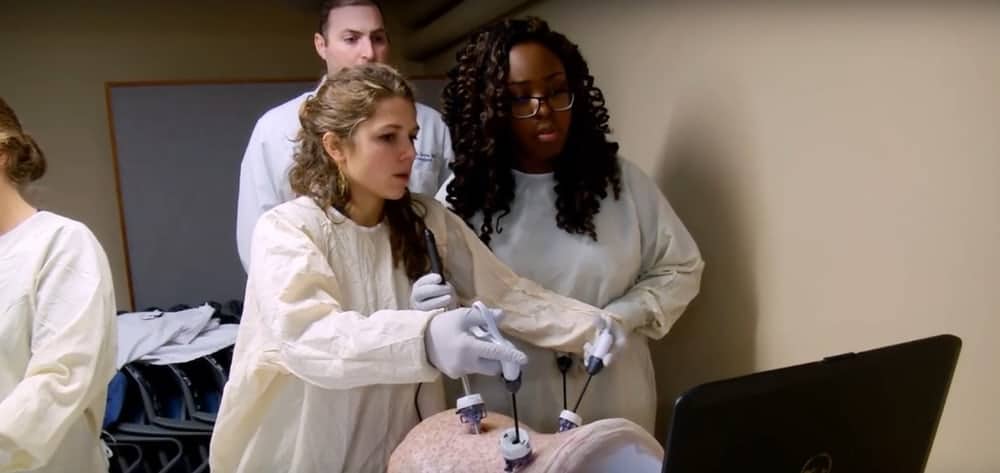United States (Rochester)
Trainee pilots get flight simulators and now medical students get 3D printed artificial organs that can be poked, prodded and dissected. And they bleed.
Physicians at the University of Rochester Medical Center have been getting crafty with science by fabricating artificial organs and human anatomy that mimic the real thing. ‘Simulated Inanimate Model for a Physical Learning Experience’ (SIMPLE) involves converting medical scans into computer generated designs and, through 3D printing, fabricating lifelike organs. Injected with a hydrogel of a consistency identical to that found in our bodies, these organs have the same feeling as the real thing.
These models are able to create highly realistic simulations for training; the ultimate vision being to enable surgeons to rehearse complex cases before the real patient is brought into the operating room. After all, practice makes perfect.
“Surgeons are just like pilots,” explains project leader Ahmed Ghazi. “There will always be the first time a pilot takes a 747 up into the air and there will always be a first time a surgeon does a procedure from beginning to end on their own. While pilots have simulators that allow them to spend hours of training in a realistic environment, there really is no lifelike equivalent for surgeons.”
Want to know how they bleed? The artificial blood vessels are connected to bags of red dye. SIMPLE.
Project leader
Ahmed Ghazi, Department of Urology, and Jonathan Stone, Neurosurgery, URMC
Support the Atlas
We want the Atlas of the Future media platform and our event to be available to everybody, everywhere for free – always. Fancy helping us spread stories of hope and optimism to create a better tomorrow? For those able, we'd be grateful for any donation.
- Please support the Atlas here
- Thank you!

Gall bladder removal

